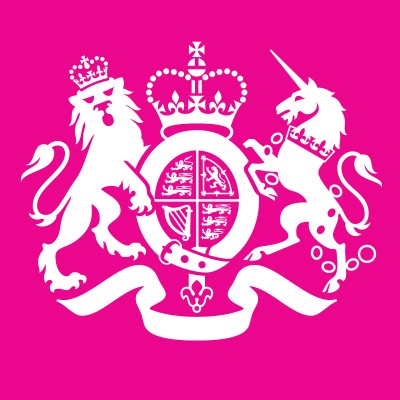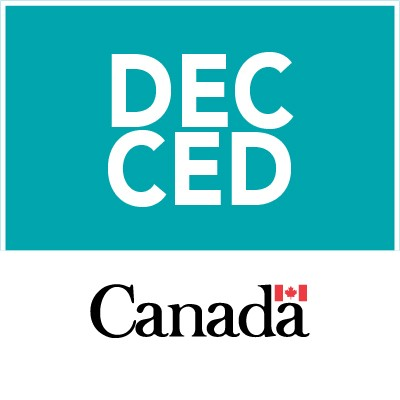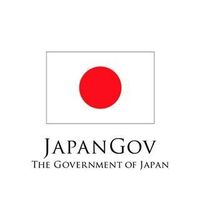Tensions Rise as Trump Exits G7 Amid Israel-Iran Conflict
June 18, 2025, 10:54 am

Location: United Kingdom, Wales, Newport, Wales
Employees: 1001-5000
Founded date: 1954
Total raised: $12.06B
The world is a stage, and the G7 summit in Canada has become a dramatic backdrop for escalating tensions between Israel and Iran. As President Donald Trump departed early from the summit, he left behind a whirlwind of diplomatic maneuvering and stark warnings. The air crackled with uncertainty, as leaders grappled with a conflict that threatens to engulf the Middle East.
Trump's abrupt exit was not just a footnote; it was a signal. He cited “much bigger” issues than ceasefire talks. The White House echoed this sentiment, emphasizing the urgency of the situation in the Middle East. The G7 leaders, gathered in the picturesque Rocky Mountains, found themselves united in their condemnation of Iran. They labeled it the “principal source of regional instability and terror.” This was not just rhetoric; it was a call to arms, a declaration of support for Israel's right to defend itself.
The conflict has been simmering, boiling over into missile exchanges. Israel's airstrikes targeted Iranian sites linked to its nuclear ambitions. The G7's joint statement underscored their resolve: Iran must never possess nuclear weapons. This was a clear message, a line drawn in the sand. Yet, as Trump departed, the question loomed: what comes next?
In a world increasingly divided, Canadian Prime Minister Mark Carney described the summit as a “hinge” moment in history. The stakes are high. The G7 nations—Canada, the U.S., the U.K., France, Germany, Italy, and Japan—are grappling with not just the Israel-Iran conflict, but a myriad of global challenges. From climate change to trade wars, the agenda is packed. Yet, the Middle East crisis looms largest.
Trump's early departure was not merely a logistical decision; it was a strategic pivot. He urged Iranian civilians to evacuate Tehran, a stark warning that underscored the gravity of the situation. His social media posts were blunt, reflecting a leader unafraid to stir the pot. “Iran should have signed the deal I told them to sign,” he stated, hinting at a missed opportunity for diplomacy.
The G7 leaders were not passive observers. They convened informal meetings to discuss the widening conflict. British Prime Minister Keir Starmer and German Chancellor Friedrich Merz were among those who expressed the need for a united front. Merz emphasized that Iran must not acquire nuclear capabilities. This was a chorus of voices, each echoing the same sentiment: the world cannot afford a nuclear-armed Iran.
Yet, amidst the urgency, Trump’s focus seemed divided. He criticized the G7's past decisions, particularly the expulsion of Russia in 2014. He suggested that this move had destabilized the world. His willingness to entertain the idea of including China in the G7 only added to the complexity. The summit was not just about the Middle East; it was a chess game of global power dynamics.
The backdrop of trade tensions added another layer of complexity. Trump has imposed tariffs on numerous nations, raising concerns about a potential global economic slowdown. The G7 leaders are caught in a balancing act, trying to project unity while addressing their own national interests. The summit was a stage for these leaders to navigate a minefield of issues, from trade to military alliances.
As the summit unfolded, the specter of the Israel-Iran conflict loomed large. The G7's call for a resolution was a plea for calm in a storm. Yet, with Israel claiming “full aerial superiority” over Tehran, the situation appeared far from resolved. The military actions were not just tactical; they were a signal of intent. Israel is prepared to defend its interests, and the world is watching.
The G7 summit is a reminder of the interconnectedness of global issues. The leaders gathered in Canada are not just discussing the Middle East; they are addressing a web of challenges that include climate change, immigration, and technological advancements. Each issue is a thread in a larger tapestry, and the stakes are high.
As Trump met with various leaders, including those from Ukraine and Mexico, the conversations were likely as much about trade as they were about security. The U.S. president's focus on tariffs and trade agreements underscores his administration's priorities. Yet, the urgency of the Middle East conflict cannot be ignored. It is a ticking clock, and the world is holding its breath.
In the end, the G7 summit is a reflection of a world at a crossroads. The leaders are grappling with a complex array of issues, each demanding attention. The Israel-Iran conflict is a flashpoint, a reminder that peace is fragile. As Trump heads back to Washington, the question remains: will the world find a way to navigate these turbulent waters, or will the storm only grow stronger? The answer lies in the actions taken in the days and weeks to come. The world is watching, and the stakes have never been higher.
Trump's abrupt exit was not just a footnote; it was a signal. He cited “much bigger” issues than ceasefire talks. The White House echoed this sentiment, emphasizing the urgency of the situation in the Middle East. The G7 leaders, gathered in the picturesque Rocky Mountains, found themselves united in their condemnation of Iran. They labeled it the “principal source of regional instability and terror.” This was not just rhetoric; it was a call to arms, a declaration of support for Israel's right to defend itself.
The conflict has been simmering, boiling over into missile exchanges. Israel's airstrikes targeted Iranian sites linked to its nuclear ambitions. The G7's joint statement underscored their resolve: Iran must never possess nuclear weapons. This was a clear message, a line drawn in the sand. Yet, as Trump departed, the question loomed: what comes next?
In a world increasingly divided, Canadian Prime Minister Mark Carney described the summit as a “hinge” moment in history. The stakes are high. The G7 nations—Canada, the U.S., the U.K., France, Germany, Italy, and Japan—are grappling with not just the Israel-Iran conflict, but a myriad of global challenges. From climate change to trade wars, the agenda is packed. Yet, the Middle East crisis looms largest.
Trump's early departure was not merely a logistical decision; it was a strategic pivot. He urged Iranian civilians to evacuate Tehran, a stark warning that underscored the gravity of the situation. His social media posts were blunt, reflecting a leader unafraid to stir the pot. “Iran should have signed the deal I told them to sign,” he stated, hinting at a missed opportunity for diplomacy.
The G7 leaders were not passive observers. They convened informal meetings to discuss the widening conflict. British Prime Minister Keir Starmer and German Chancellor Friedrich Merz were among those who expressed the need for a united front. Merz emphasized that Iran must not acquire nuclear capabilities. This was a chorus of voices, each echoing the same sentiment: the world cannot afford a nuclear-armed Iran.
Yet, amidst the urgency, Trump’s focus seemed divided. He criticized the G7's past decisions, particularly the expulsion of Russia in 2014. He suggested that this move had destabilized the world. His willingness to entertain the idea of including China in the G7 only added to the complexity. The summit was not just about the Middle East; it was a chess game of global power dynamics.
The backdrop of trade tensions added another layer of complexity. Trump has imposed tariffs on numerous nations, raising concerns about a potential global economic slowdown. The G7 leaders are caught in a balancing act, trying to project unity while addressing their own national interests. The summit was a stage for these leaders to navigate a minefield of issues, from trade to military alliances.
As the summit unfolded, the specter of the Israel-Iran conflict loomed large. The G7's call for a resolution was a plea for calm in a storm. Yet, with Israel claiming “full aerial superiority” over Tehran, the situation appeared far from resolved. The military actions were not just tactical; they were a signal of intent. Israel is prepared to defend its interests, and the world is watching.
The G7 summit is a reminder of the interconnectedness of global issues. The leaders gathered in Canada are not just discussing the Middle East; they are addressing a web of challenges that include climate change, immigration, and technological advancements. Each issue is a thread in a larger tapestry, and the stakes are high.
As Trump met with various leaders, including those from Ukraine and Mexico, the conversations were likely as much about trade as they were about security. The U.S. president's focus on tariffs and trade agreements underscores his administration's priorities. Yet, the urgency of the Middle East conflict cannot be ignored. It is a ticking clock, and the world is holding its breath.
In the end, the G7 summit is a reflection of a world at a crossroads. The leaders are grappling with a complex array of issues, each demanding attention. The Israel-Iran conflict is a flashpoint, a reminder that peace is fragile. As Trump heads back to Washington, the question remains: will the world find a way to navigate these turbulent waters, or will the storm only grow stronger? The answer lies in the actions taken in the days and weeks to come. The world is watching, and the stakes have never been higher.

